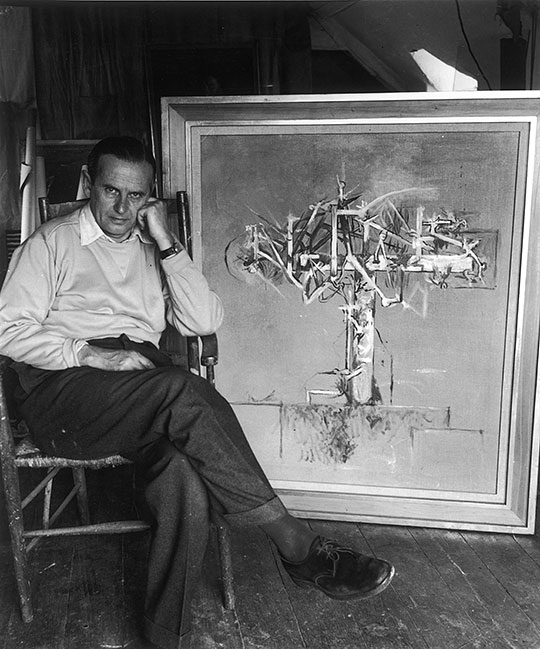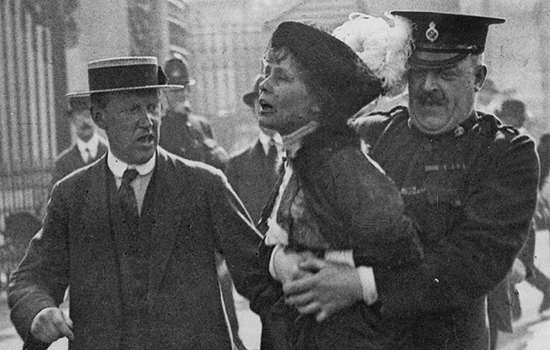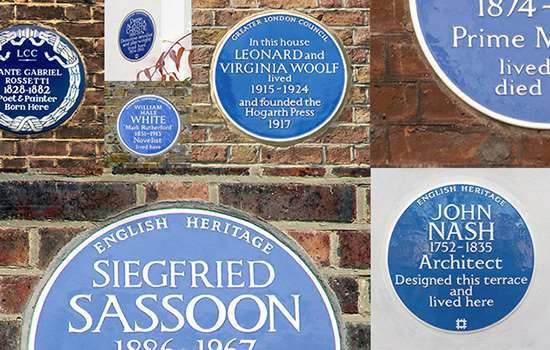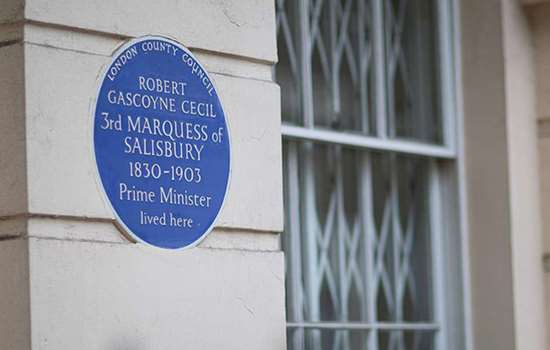SUTHERLAND, Graham (1903–1980)
Plaque erected in 2025 by English Heritage at 8 Dorset Road, Merton Park, London, SW19 3HA, London Borough of Merton
All images © English Heritage
Profession
Artist
Category
Fine Arts
Inscription
GRAHAM SUTHERLAND 1903–1980 Artist lived here as a child
Material
Ceramic
Graham Sutherland was one of the leading British artists of the 20th century. He is commemorated with a blue plaque at 8 Dorset Road, where he lived as a child and first developed a fascination with landscape.

Graham Sutherland was born in Streatham on 24 August 1903. He spent his early formative years – from about the ages of four to eight – living at 8 Dorset Road, Merton Park. The neo-vernacular house, called Allandene in Sutherland’s time, was designed by Heny Goodall Quartermain and built in 1891–2. It is part of the Merton Park garden suburb development promoted by the landowner John Innes.
Allandene was the place, Sutherland recalled, where ‘I had my first taste of landscape’. He remembered the elm trees in the garden and crawling through the hedges to discover a different garden next door. Sutherland credited these early explorations with inspiring an interest in how one space opened into another. At night, Sutherland would listen to the sound of trains on the railway (now Croydon Tramlink) that runs behind the house.
On leaving school, Sutherland initially became an engineering apprentice but was hampered by his lack of mathematical ability. In 1921, he persuaded his father to let him study etching at Goldsmiths College of Art. He exhibited a pastoral scene at the Royal Academy in 1923.
Early career
After leaving Goldsmiths in 1926, Sutherland worked as a printmaker, taught engraving at the Chelsea School of Art and designed glassware, textiles and posters for – among other clients – Shell-Mex and London Transport.
The rugged terrain of Pembrokeshire, which he first visited in 1934, inspired him to turn to painting, and his Surrealist-tinged views such as Black Landscape (1939–40) and Horned Forms (1944) propelled him to critical acclaim.
With the support of his leading patron, Sir Kenneth Clark, Sutherland was engaged as an official war artist during the Second World War, depicting domestic and industrial scenes on the home front, and producing some of the most evocative depictions of the London Blitz, such as Devastation, 1941: An East End Street.
Portraits
After the war, Sutherland exhibited extensively and internationally. As an experiment, he painted a portrait of the writer Somerset Maugham (1949), and more than 50 portrait commissions followed. Maugham commented that Sutherland had shown ‘far more of me than I ever saw myself’, but other sitters reacted less favourably to the painter’s unsparingly honest approach.
Notoriously, Sir Winston Churchill thought that Sutherland’s portrait – commissioned by Parliament as an 80th birthday present in 1954 – showed him as a ‘gross and cruel monster’, and it was later destroyed by his wife, Clementine.
Religious paintings
Sutherland, a Catholic convert, also worked in the genre of religious painting. His commissions, including a crucifixion for St Matthew’s Church, Northampton (1946), drew on his experience as a war artist.
In 1952 Sutherland was commissioned to design the immense and much admired tapestry Christ in Glory for Basil Spence’s new Coventry Cathedral. This commission was fraught with difficulties and took nine years to complete.
Recognition and later life
Sutherland’s relationship with the establishment was complicated. When he was appointed to the Order of Merit in 1960, he responded ‘I can only pray that I will not be thought respectable’. He was a trustee of the Tate Gallery from 1948 until 1954 but resigned after a political spat.
In later life Sutherland lived in Kent and in France, but often returned to Pembrokeshire for inspiration, where he created still lives and animal paintings, notably a series of aquatints entitled The Bees (1977). Another late success was a self-portrait (1977) painted for a National Portrait Gallery retrospective of his work.
Sutherland died on 17 February 1980.
Further reading
- Roger Berthoud, ‘Sutherland, Graham Vivian (1903–1980)’, Oxford Dictionary of National Biography (2004) (access with a UK public library card)


